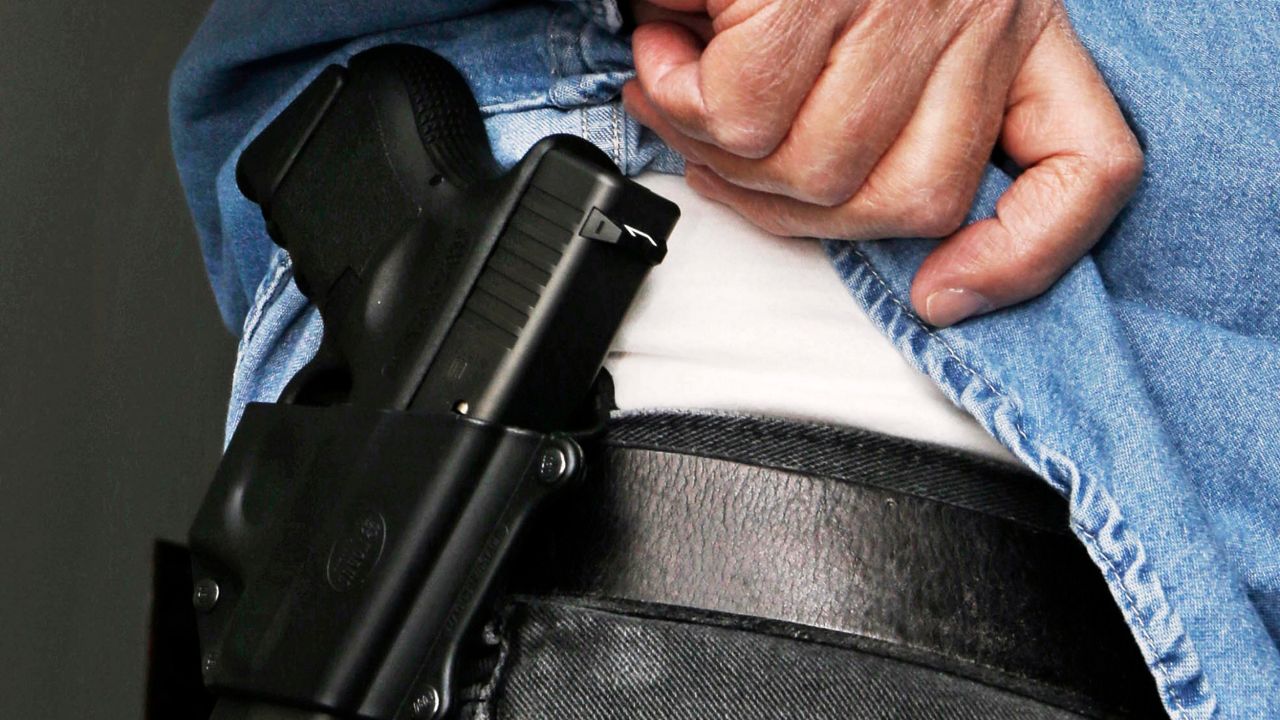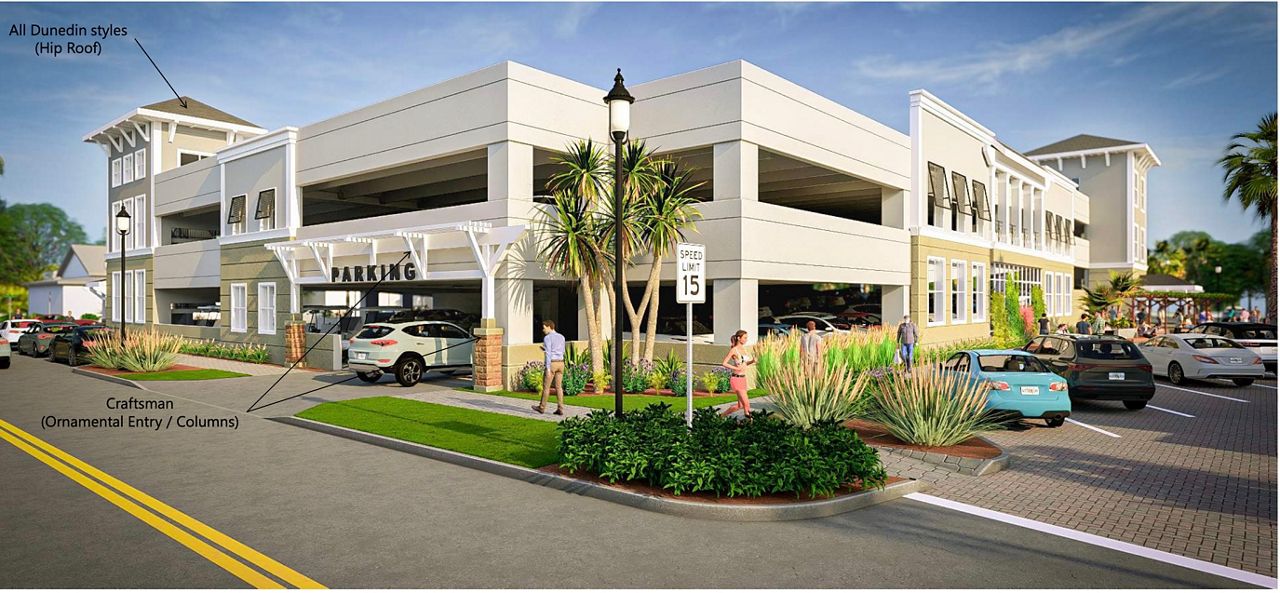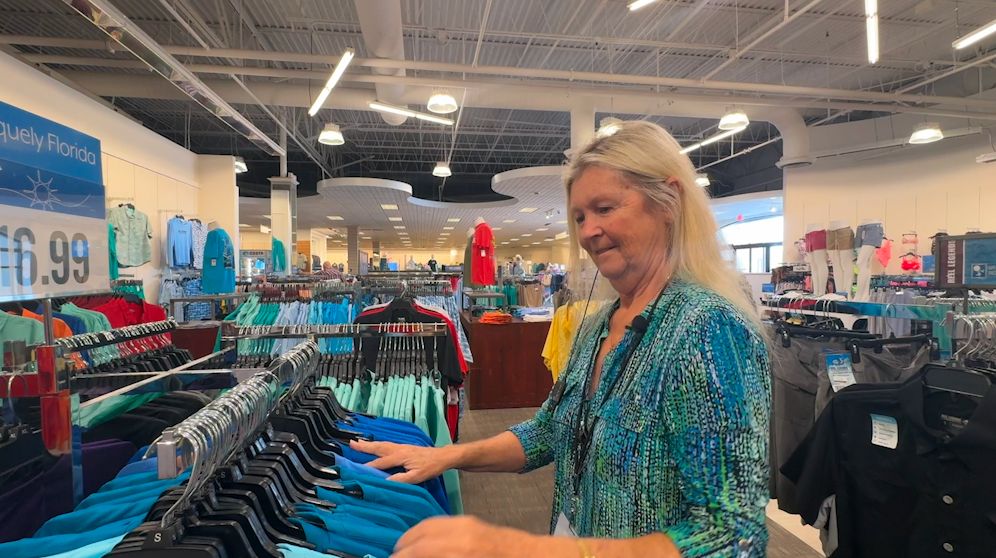BRADENTON, Fla. — The owner of the Anna Maria Oyster Bar Landside in Bradenton who recently got his second robot to wheel out food believes automation is the future for the restaurant industry which continues to face labor shortages.
"I truly believe that you're going to see more and more robotics," said John Horne, Oysters Rock Hospitality CEO. "Pearl has been with us for a year-and-a-half now. She hasn't missed a single shift."
Horne said he got his first robot, named Pearl, in December 2021, from Bear Robotics and agreed to let the company beta test it at his restaurant to improve the technology. A new and improved robot named Pearl 2.0 arrived last month with updated features, according to Horne.
"It's a symbiotic relationship," he said. "We're helping them, they're helping us because I think it is the wave."
Some of those robot improvements include being able to drive up a ramp, larger rubberized wheels to go over transitions and a gyroscope tray for stabilization, according to Horne.
"I can't wait to see 3.0 and then beyond because it gets better every time," he said. "It's going to help everybody."
Horne said it's the robot's job to wheel out food from the kitchen to the customer's table. The automation is not meant to replace servers, but instead help make their job easier.
"It speeds up service. It allows them to do more tables," he said. "It just makes the guest experience better."
Horne dressed up Pearl 2.0 for a tropical restaurant theme.
"We've got a hula skirt on her. So, gives her a little personality," he said. "A coconut bra, you know. It's got to be fun."
The owner said customers get such a kick out of Pearl 2.0 they pull out their phones to take photos.
"One of the fun stories about it is it slowed us down a little bit because everybody is like, 'wait, wait, wait, I need to take a picture,'" he said. "'Back it up. Can you back Pearl up?'"
Server Crystal Rodriguez, 36, said she really appreciates the robot help when there's a large table of customers.
"When you have a big party of 10 or more and you've got all these trays, Pearl is always there for the rescue," she said. "It is so helpful."
Rodriguez said the technology allows her to spend more time at her station attending to more customers. Horne said his goal with automation is to help the servers make more money.
"Are we trying to eliminate jobs? Absolutely not. We're trying to make their jobs easier," he said. "We're trying to help them earn more money. We're trying to help them give better service."
The hospitality and leisure workforce has been one of the slowest industries to rebound from the pandemic.
"Staffing is still an issue across the state," said Carol Dover, President and CEO of Florida Restaurant and Lodging Association. "We applaud our members for implementing creative and fun solutions while also working to rebuild our workforce.”
The January jobs report shows the national unemployment rate fell to 3.4 percent, a 54-year low, but the rate for hospitality and leisure when separated out was two points higher at 5.4 percent.
Florida's unemployment rate dropped to 2.5 percent in December and the labor force grew by 3.5 percent, more than double the national growth rate of 1.6 percent, according to Leigh McGowan, Department of Economic Opportunity Press Secretary.
"Florida’s statewide employment in the Food Services and Drinking Places industry peaked at 839,400 in February 2020, and then dropped to 456,000 in April of the same year," McGowan said. "As of December 2022, statewide employment in the Food Services and Drinking Places industry has recovered to 858,400, which is 2.3 percent higher than the peak employment level from February 2020."
Dover said operators have been utilizing new technology and other best practices to reduce operating stressors.
“From QR codes replacing menus, reducing menu options, and investing in automation like robots to alleviate workload on existing staff," she said. "Even more since the COVID-19 pandemic, which brought historic closures, supply chain issues, and labor shortages."
Horne said the only time he can't use the robot is when his restaurant gets too crowded.
"The sensors on Pearl are everywhere and so if she gets too close to someone, then she'll stop and say 'please clear the aisle,'" he said. "If there's too many people, then it just takes too long."









